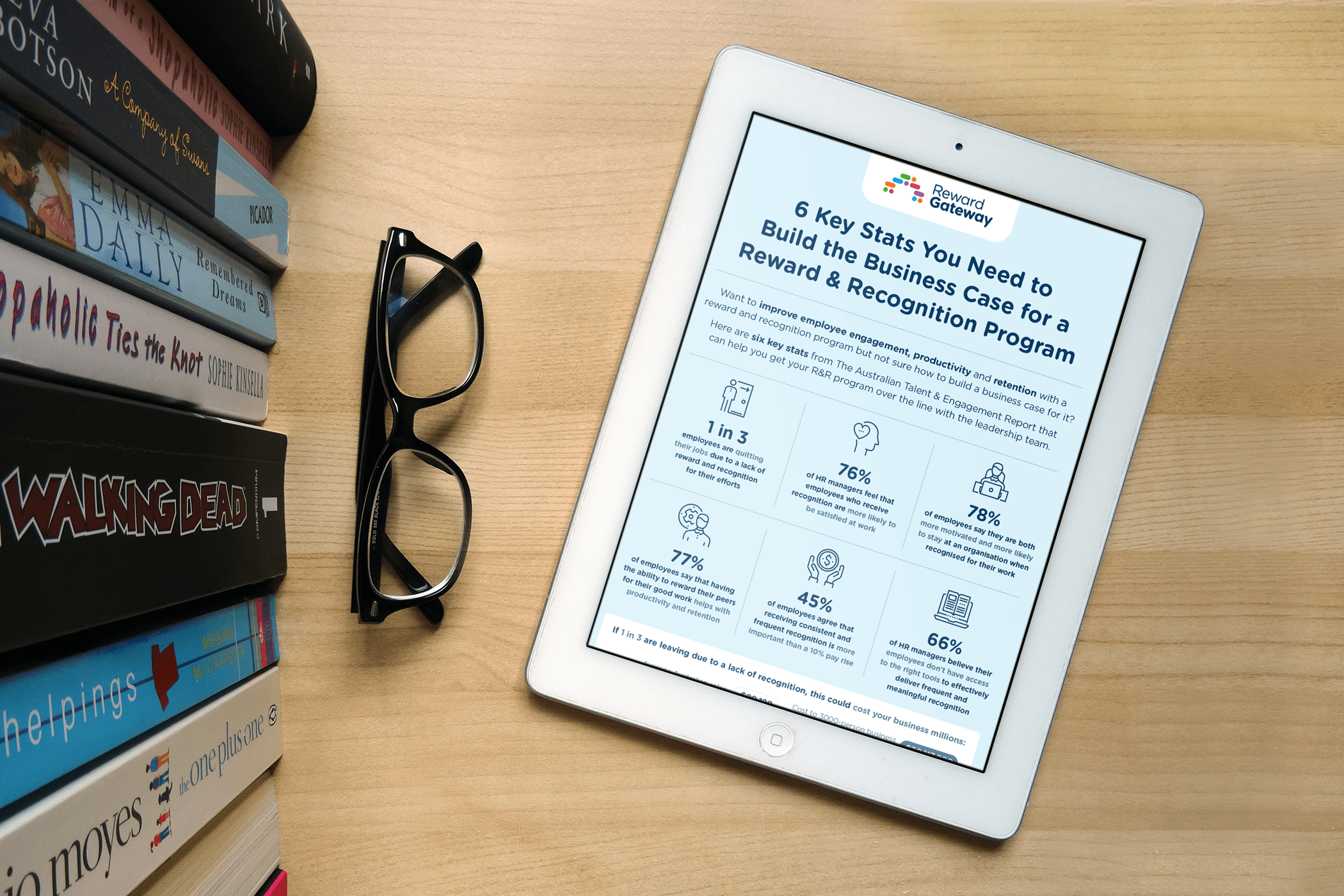Want to improve employee engagement, productivity and retention with a reward and recognition program but not sure how to build a business case for it? We’ve got you covered!
We know that it can be hard to build a strong business case that convinces sceptical stakeholders and clearly demonstrates the need for a new technology.
So, we’ve collected six key stats from The Australian Talent & Engagement Report that show why reward and recognition is a critical business need, helping you get your new reward and recognition tool over the line with the leadership team.
Keep scrolling down for our accompanying infographic as well!
1. Employees are leaving due to a lack of recognition
Our survey of 1,000 Australian employees revealed that a whopping one in three employees are quitting their jobs due to a lack of reward and recognition for their efforts.
That’s a huge number of Aussies that aren’t getting thanked for their contributions at work! It’s no wonder that they’re hopping on LinkedIn and looking for opportunities elsewhere.
It’s clear from this stat that encouraging a culture of continuous appreciation is crucial to retention. If you want to work out how much attrition is costing your business, check out our Cost of Attrition Calculator.
2. Recognition leads to satisfaction
In our research, we also surveyed 1,000 Australian HR managers to discover their views on employee benefits, reward and recognition and other employee engagement solutions.
We found that 76% of Aussie HR managers feel that employees who receive recognition are more likely to be satisfied at work.
This demonstrates that HR professionals understand the importance of regular recognition and the positive ripple effects it can have on employees.
3. Employees agree on the impact of recognition
It wasn’t just HR managers who see the benefits of recognition, surveyed employees also emphasised its importance.
Our research found that 78% of employees say they are both more motivated and more likely to stay at an organisation when recognised for their work.
4. Peer-to-peer recognition is also essential
Some organisations may view reward and recognition as something that managers give to employees, but they’d be missing out on the huge impact of peer-to-peer recognition.
A huge 77% of employees say that having the ability to reward their peers for their good work helps with productivity and retention.
5. Employees value recognition over pay rise
Our report uncovered a range of factors that were more important to Aussie employees than a pay rise.
When it comes to recognition, 45% of employees agree that receiving consistent and frequent recognition is more important than a 10% pay rise.
That’s an incredibly powerful stat to include in your business case, as it shows that there are other impactful initiatives that your business could implement if salary increases are outside your budget.
6. Lack of effective recognition tech
Unfortunately, despite the importance of recognition (which I hope these other stats have clearly communicated!), two thirds of HR managers say they don’t have the right recognition tech.
Our research revealed that 66% of HR managers believe their employees don’t have access to the right tools to effectively deliver frequent and meaningful recognition.
Check out our infographic below for a handy snapshot of these stats!
_6%20key%20stats.png?width=600&height=1045&name=2023_Key%20stats%20to%20build%20the%20business%20case%20for%20rewards%20and%20recognition%20infographic_AU(v1)_6%20key%20stats.png)
Looking for guidance? Reach out to me and the team for a personalised consultation around how we can help build your business case for a reward and recognition program at engage@rewardgateway.com.
 Sarina Pearson
Sarina Pearson
